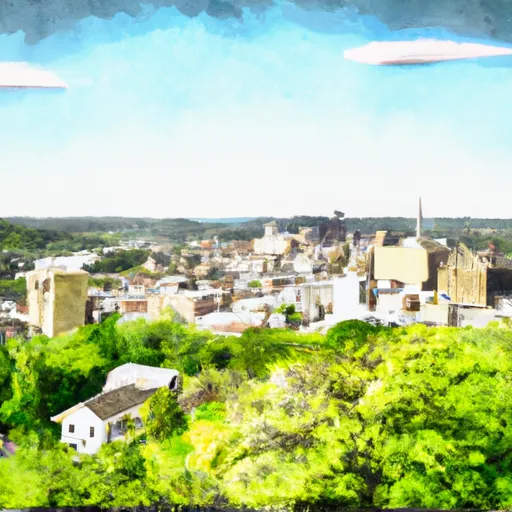-
 Snoflo Premium
Snoflo Premium
Get unlimited access to all our content
With no Ad interruptions! - Start Your Free Trial Login with existing account
Southwest
Eden Index
Climate
8.1
•
Recreation
3.1
•
Community
3.2
•
Safeguard
5.1/10

Southwest Pennsylvania is a region known for its diverse climate, hydrology constituents, and abundant outdoor recreation opportunities. The climate in this area is classified as humid continental, with hot, humid summers and cold winters. The region experiences all four seasons, with average temperatures ranging from the low 20s°F in winter to the mid-80s°F in summer.
Hydrologically, Southwest Pennsylvania is home to several rivers and streams, including the Ohio, Allegheny, and Monongahela Rivers. These water bodies provide opportunities for fishing, boating, and other water-based activities. The region also boasts numerous lakes and reservoirs, such as the Keystone Lake and Youghiogheny River Lake, which are popular for swimming, kayaking, and camping.
Outdoor recreation opportunities in Southwest Pennsylvania are abundant. The region is known for its picturesque landscapes, including rolling hills, lush forests, and stunning waterfalls. Hiking is a popular activity, with many trails available for all skill levels, such as the Laurel Highlands Hiking Trail and Ohiopyle State Park. Additionally, the region offers opportunities for hunting, birdwatching, camping, and wildlife viewing.
In conclusion, Southwest Pennsylvania's climate, hydrology constituents, and outdoor recreation opportunities make it an ideal destination for those seeking diverse natural experiences and active lifestyles.
What is the Eden Index?
The Snoflo Eden Index serves as a comprehensive rating system for regions, evaluating their desirability through a holistic assessment of climate health, outdoor recreation opportunities, and natural disaster risk, acknowledging the profound impact of these factors on livability and well-being.
Climate Health Indicator (CHI): 8.1
Southwest receives approximately
1105mm of rain per year,
with humidity levels near 83%
and air temperatures averaging around
11°C.
Southwest has a plant hardyness factor of
6, meaning
plants and agriculture in this region thrive during a short period during spring and early summer. Most
plants will die off during the colder winter months.
By considering the ideal temperature range, reliable water supplies, clean air, and stable seasonal rain or snowpacks, the Climate Health Indicator (CHI) underscores the significance of a healthy climate as the foundation for quality living.
A healthy climate is paramount for ensuring a high quality of life and livability in a region, fostering both physical well-being and environmental harmony. This can be characterized by ideal temperatures, reliable access to water supplies, clean air, and consistent seasonal rain or snowpacks.
Weather Forecast
Streamflow Conditions
Monongahela
Area Rivers
Monongahela
Snowpack Depths
Monongahela
Reservoir Storage Capacity
Monongahela
Groundwater Levels
Recreational Opportunity Index (ROI): 3.1
The Recreational Opportunity Index (ROI) recognizes the value of outdoor recreational options, such as parks, hiking trails, camping sites, and fishing spots, while acknowledging that climate plays a pivotal role in ensuring the comfort and consistency of these experiences.
Access to outdoor recreational opportunities, encompassing activities such as parks, hiking, camping, and fishing, is crucial for overall well-being, and the climate plays a pivotal role in enabling and enhancing these experiences, ensuring that individuals can engage in nature-based activities comfortably and consistently.
Camping Areas
| Campground | Campsites | Reservations | Toilets | Showers | Elevation |
|---|---|---|---|---|---|
| Mill Run - Youghiogheny River Lake | None | 1,565 ft | |||
| Outflow - Youghiogheny River Lake | 63 | 1,329 ft | |||
| Swallow Falls State Park | 65 | 2,418 ft | |||
| Deep Creek Lake State Park | 112 | 2,583 ft | |||
| Kentuck - Ohiopyle State Park | 200 | 1,558 ft | |||
| Keystone State Park | None | 1,079 ft | |||
| Crooked Creek Recreation Area | None | 969 ft | |||
| Blackwater Falls State Park | None | 3,112 ft | |||
| Tub Run Rec Area - Youghiogheny River Lake | 101 | 1,583 ft | |||
| Bush | None | 957 ft |
Nearby Ski Areas
Catastrophe Safeguard Index (CSI):
The Catastrophe Safeguard Index (CSI) recognizes that natural disaster risk, encompassing floods, fires, hurricanes, and tornadoes, can drastically affect safety and the overall appeal of an area.
The level of natural disaster risk in a region significantly affects safety and the overall livability, with climate change amplifying these risks by potentially increasing the frequency and intensity of events like floods, fires, hurricanes, and tornadoes, thereby posing substantial challenges to community resilience and well-being.
Community Resilience Indicator (CRI): 3.2
The Community Resilience Indicator (CRI) recognizes that education, healthcare, and socioeconomics are crucial to the well-being of a region. The CRI acknowledges the profound impact of these elements on residents' overall quality of life. By evaluating educational resources, healthcare accessibility, and economic inclusivity, the index captures the essential aspects that contribute to a thriving community, fostering resident satisfaction, equity, and social cohesion.

